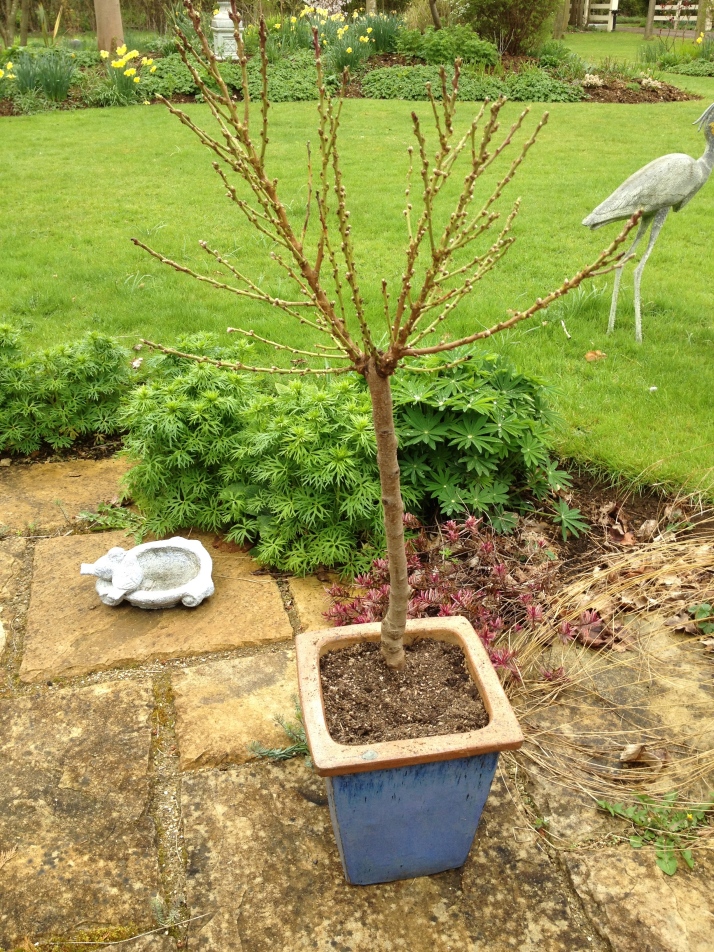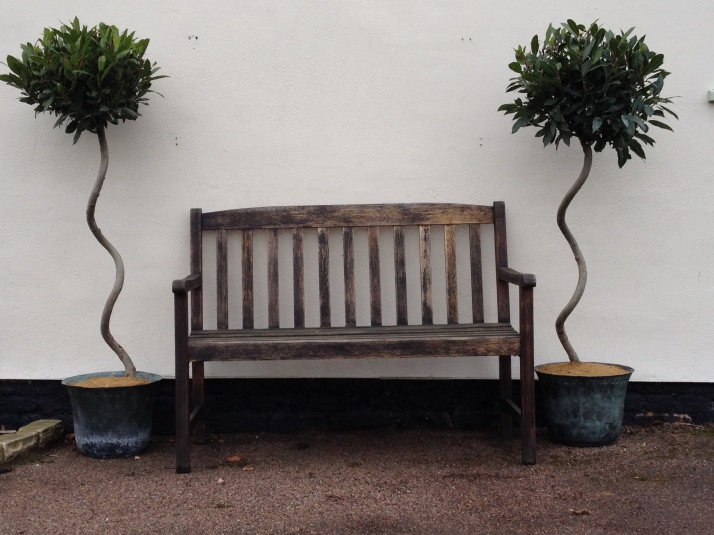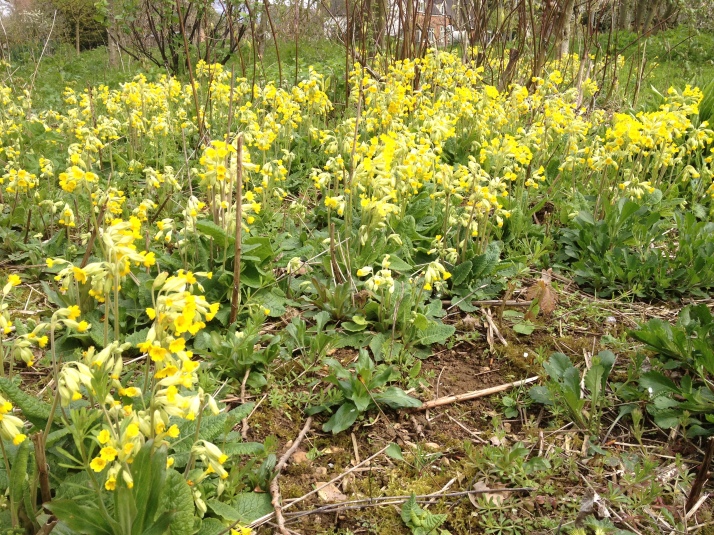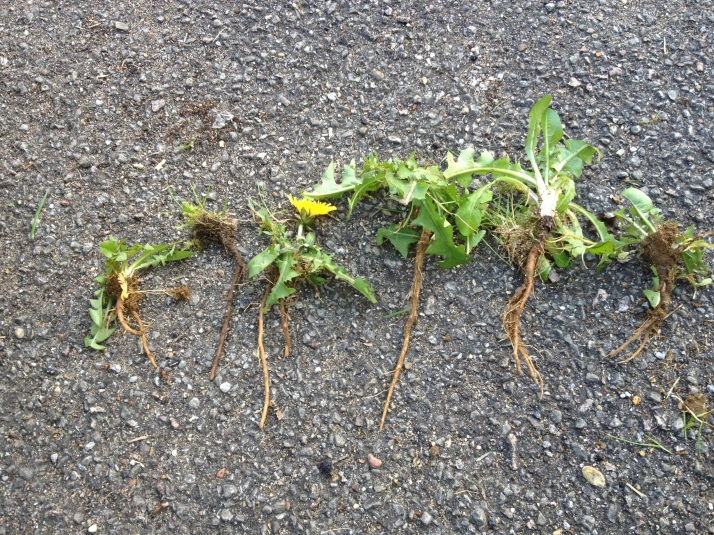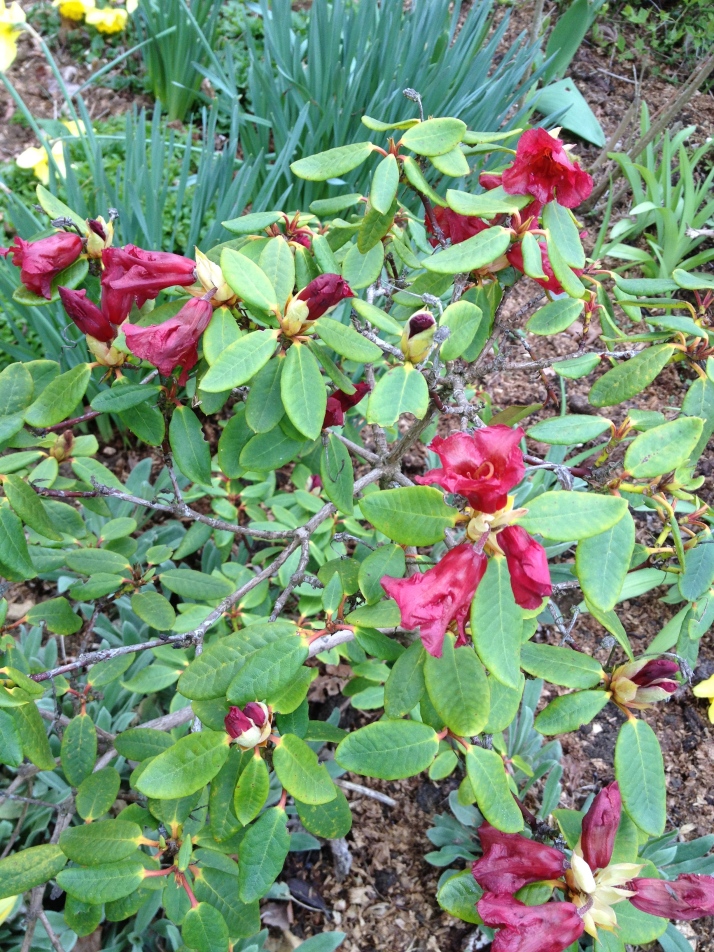All the books say it; “think how large your tree/bush will grow before you plant it” and “remember the ultimate height of the tree as you don’t want to move it”, and, of course, “think how fast your tree will grow”, but do we???
Hands up the one perfect person that has always considered the ultimate height, the ultimate spread, the speed of growth and how it will look in five years time amongst its neighbours. Right, so all of you without trees can put your hands down and I’ll admit I’m not perfect either, but I love trees.
I’ve got an Indian Bean Tree Catalpa bignonioides that I bought after seeing an amazing specimen near an old castle near Brussels that is now a conference centre. It was astonishing with its huge leaves and the beans dropping down, it completely covered the ground with shade but it was pretty awe-inspiring and I WANTED ONE!
So, I bought one, even though it says the trunk can grow as much as 2M (6 feet) in a year, I thought “not in my garden, nothing grows that fast”. Well, one of the other things about the Indian Bean Tree is that as it grows, you can easily see a year’s growth as the trunk seems to change direction slightly each year – so let’s see what happened. I think it was about three years old when I first got it and I could see that in each of those years it grew around 10-20cm (4 – 8inches) a year, so I didn’t worry it was going to outgrow anything. So I planted it in the middle of a bed with other plants as I thought it would make a good focal point.
Well, if you look at the photo, I have put yellow and purple markings showing the end of a year’s growth and the figures are as follows:
Year four (first in the ground): It added 26cm (11inches). I was really pleased.
Year five: Another 34cm (13inches). Ecstatic, this is going to be really impressive.
Year six: An additional 46cm (18 inches). Yes, great, shows above everything else. Though someone did say “do you think this is growing a bit fast?”
Year seven: It added another 110cm (more than 3′ 6″ – in a year!)
Hum… Now I love it, but it doesn’t look like a focal point any longer, it looks like a strange beast or a mobile phone aerial sticking out between a housing estate. And if it is going to grow another metre or more each year, there’s no doubt it is going to be in the wrong place, so there’s nothing for it, but to move it somewhere else. So, in the winter I dug around it as much as possible, but, of course, you can’t get up all the roots from a tree that is now above 2M in overall height by hand, but I got as much as possible, breaking through the others as far below-ground as I could, dug a great hole for it in its new home, put in masses of compost and food and talked to it nicely, apologised for the inconvenience and moved it hoping that I hadn’t killed it in the process. (as a backup, I took a few cuttings – they all took, so I gave some away at the village show and kept one, so now I have two … anyway, where was I?)
So, the Indian Bean Tree is about last in the Spring to put its new leaves on and I was biting my nails (sorry Mum) wondering if I had killed it, well the good news is that no, I hadn’t.
But that was five years ago and perhaps it is sulking with me, but more likely it is still regrowing its roots, putting its efforts into replacing the parts of it I had amputated as each of the last five years its growth has never been above around 15cm, so my hope for a broad set of leaves rising to the sky has taken a knock-back and, honestly, its all my fault. I should have thought ahead and planted it where it is now first time around. OK, it would have looked frankly ridiculous for the first few years, but by now it would have been larger and probably happier.
Sorry tree, I promise to do better in the future.
As an aside, I knock off new growths down the trunk each year to ensure that just the three branches near the top and the leader grow, sadly the leader keeps angling itself in the same way each year, but hopefully it will right itself over time. Today it is just putting on its buds for the year, so it has made it through another winter (unlike the arbutus / strawberry tree which sadly is looking worse), so now I just hope it will go back to growing 50cm or more each year; come on baby, reach for the skies!


